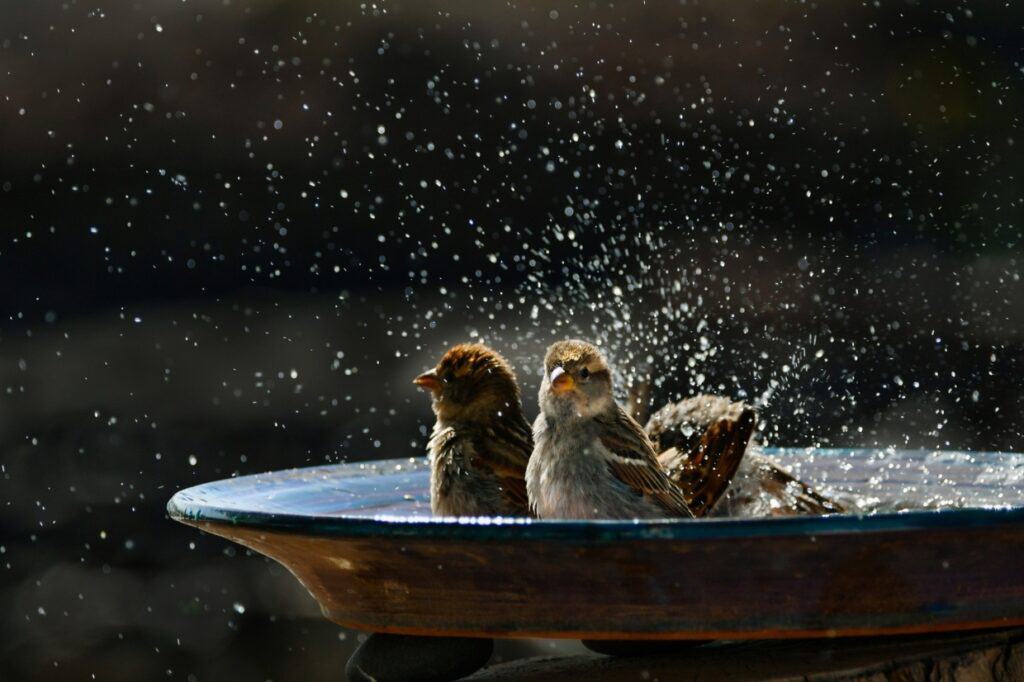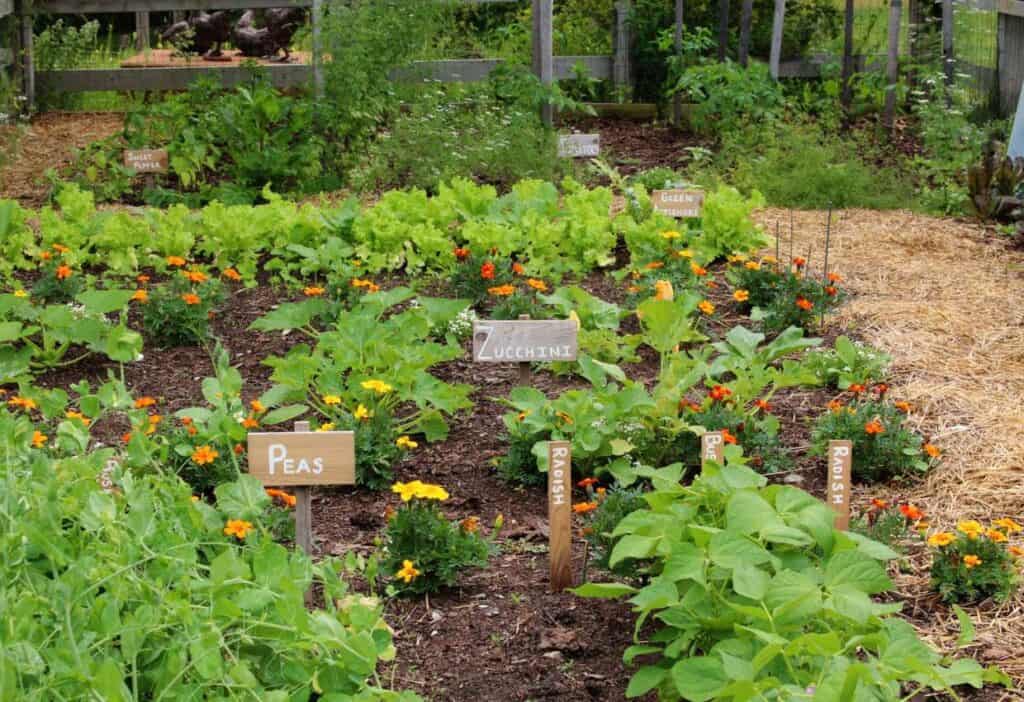If you and your family enjoy watching birds at the bird feeder all winter long, why not add a birdbath in the summer? It’s an easy step to make your area more appealing to feathered friends in the summer.

A birdbath will add a simple water feature to your yard without a lot of work and zero plumbing. In fact, the only thing you need to do is fill the bath with fresh water on a daily basis. Once you add a birdbath, you better get your binoculars and bird book out and ready to identify all the birds.
Why add a birdbath
If you feed birds in the winter and enjoy watching their antics, adding a birdbath allows you to have the same level of entertainment in the garden during the summer. You can watch birds grab a sip of water or take a refreshing bath.
One of the best things about a backyard birdbath is seeing new parents bring their fledglings for a bath. Observing baby birds splashing and preening in freshwater is one of the best parts of backyard bird watching.
But what kind of birdbath should we add?
Visit your local garden center and see what’s available in your area. They often have various models to choose from, ranging from simple bowls you can put on a stump or flush on the ground to more complex bird baths on stands.
What you pick is up to you and your design aesthetic. There is nearly something for everyone and every kind of garden, from vegetable gardens to rock gardens and flower gardens.

How to care for a birdbath
When you first get your birdbath, add a rock to the bottom of it; that way, short birds can get in and out easily. In the summer, the only daily care you need to worry about is filling it with fresh water. If that sounds like too much, you can probably get away with only filling it every two to three days. Your local bird crowd will definitely let you know if it’s empty. Additionally, every week, you will need to empty it, rinse it and refill it to keep it clean.
When fall comes around, it’s time to think about putting it away for the winter. If you live in an area that gets cold and freezes, it’s best to empty the birdbath and store it for the winter.
If you want to keep it up for the winter, you should invest in a birdbath warmer that will keep the water just above freezing. This will provide water for your wintertime birds and keep the birdbath from freezing and cracking as the water expands and freezes to ice.
“We add bird baths, feeders and watering stations to our garden to attract and support native birds. These are set up in raised, open areas so the birds feel safe and can spot approaching predators. We also place stones in the baths, providing thirsty bees with a safe spot to land when they come for a drink.”
— Dan Morris, Fire and Saw
How to protect from cats
If you live in an area with a large outdoor cat population, then this is something to consider. It’s not fair to entice birds to your birdbath only to set them up to get eaten by wily cats. You’ll want to protect the birds from your own cats, too, if they get outside time.
If cats are a concern, choosing a birdbath on a tall pedestal or base is wise. Setting it away from places cats can hide should keep you fairly safe from unfortunate accidents.

Other creatures who benefit from a bird bath
One of the cool things about adding a birdbath is that you’re essentially adding a water dish to your yard. Butterflies and honeybees use birdbaths as their local watering hole. If your birdbath is flush to the ground, you may even be providing water for foxes, porcupines and deer, who often come around in the night when humans are tucked up in bed.
Parting thoughts
Watching birds splash, sip and relax does something for anyone seeking out a simpler life. It’s not flashy, and it’s not electronic, but it is soul-satisfying. It’s a lot like watching your chickens in their yard, making things from scratch, and enjoying the smell of fresh cut grass.
Adding a birdbath to your yard not only enhances your birdwatching experience but also supports a variety of wildlife. It’s a simple and effective way to bring more life and activity to your outdoor space. Are you ready to take your backyard birdwatching to the next level?
Laura Sampson of Little House Big Alaska is on a mission to teach modern family-oriented home cooks how to make old-fashioned foods new again. She shares her passion for home cooking, backyard gardening and homesteading on her website and blog.